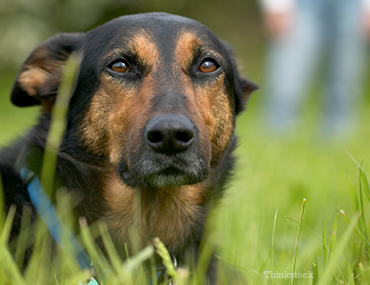For such a tiny parasite, Giardia is significant and swings a wide swath among people and animals alike.
What is Giardia?
Giardia is a microscopic, protozoan parasite that causes inflammation of the intestinal tract and subsequent diarrhea that can be very serious. It has been referred to as backpackers’ disease because of the risk of exposure when hiking.
How common is Giardia?
Giardia is common in pets. The Companion Animal Parasite Council reports that while “regional differences in Giardia prevalence exist, infections in dogs with clinical signs averaged 15.6%.”
differences in Giardia prevalence exist, infections in dogs with clinical signs averaged 15.6%.”
Giardia is a worldwide health concern -- particularly in developing countries. According to the CDC, even in developed countries, giardia affects nearly “2% of adults and 6% to 8% of children.” In undeveloped countries it can be much higher, owing to the lack of availability of clean water.
How does it spread?
Giardia is transmitted by oral ingestion of water or food that has been contaminated by stools of infected people and animals.
What are the signs of Giardia?
Acute infection after exposure can last from 1-2 weeks. The clinical signs of Giardia in animals and people are very similar and may include:
- Diarrhea
- Gas
- Greasy stools that tend to float
- Stomach or abdominal cramps
- Upset stomach or nausea/vomiting
- Dehydration (loss of fluids) and weight loss
How is Giardia diagnosed?
- Smear — Sometimes the immature trophozoites can be seen in a smear of the feces under a microscope. Because they are only passed intermittently, even in symptomatic dogs, multiple smears over time must be done; still, they may fail to reveal the parasites.
- Fecal flotation — Fecal floatation for cysts is more diagnostic, but the trophozoite stage won’t be seen by floatation—the floatation solution destroys the trophozoites.
- ELISA and IFA assays — Assays for Giardia antigens in feces are the most diagnostic test we have available. They are very sensitive, easy to run and very specific tests.
All dogs with clinical signs of Giardia should be tested.
How is Giardia treated?
There is no approved treatment for Giardia in animals. Metronidazole is the most commonly used extra-label therapy, but is often ineffective. Authorities recommend a combination of drugs that are available to veterinarians for other indications. Effective treatment involves metronidazole in combination with a drug called fenbendazole. Following appropriate treatment, infected animals should be retested for response. The CAPC also recommends that bathing accompany treatment.
Can I get Giardia from my dog?
Transmission from dogs to humans appears to be rare. While there have been cases of human infection that could be traced back to dogs, human infections are primarily acquired from other humans. Most human infections occur from environmental food or water contamination by infected humans.
How do I prevent Giardia?
Treatment and prevention go hand in hand since re-infection is possible. Medications, sanitation and environmental control are important. Unfortunately, sanitizing water and soil is very difficult. It is also important that all pets showing clinical signs be treated to prevent re-infection.
Infection occurs commonly from drinking water in ponds, lakes, streams and rivers. Even mountain spring water sources may be contaminated. Avoid drinking water from these sources and do not allow your pet to drink from them either. When you go hiking, always carry fresh water — sufficient for yourself and your dog. If you must drink from wilderness sources, the water should be purified using filters, chemical purifiers or by boiling it before drinking.
If you have any questions or concerns, you should always visit or call your veterinarian -- they are your best resource to ensure the health and well-being of your pets.

